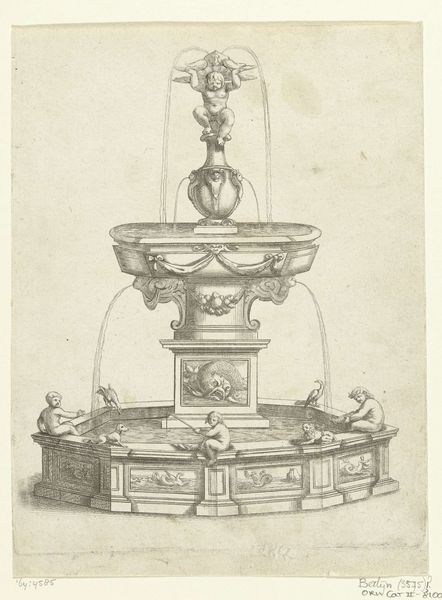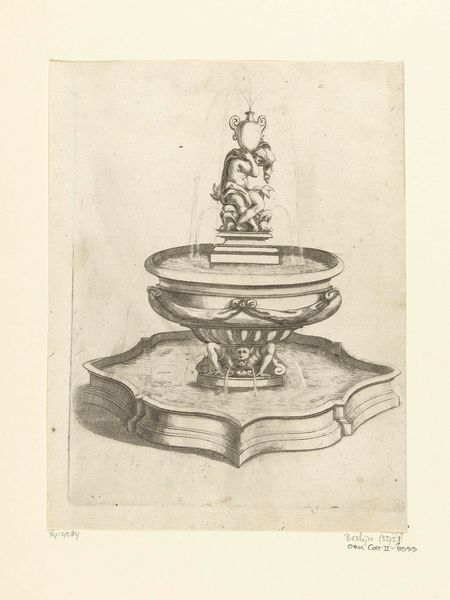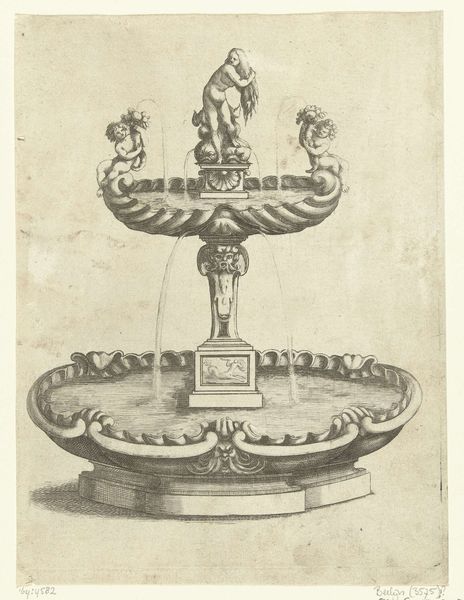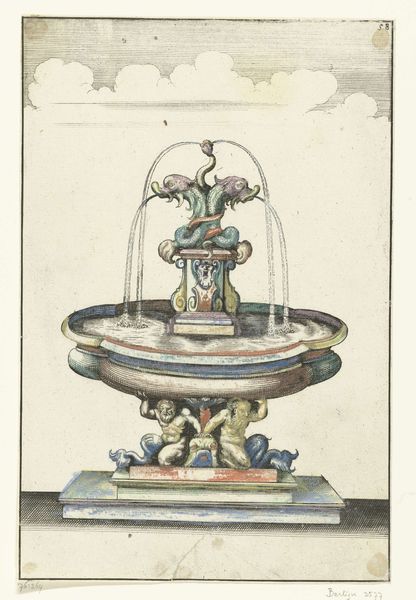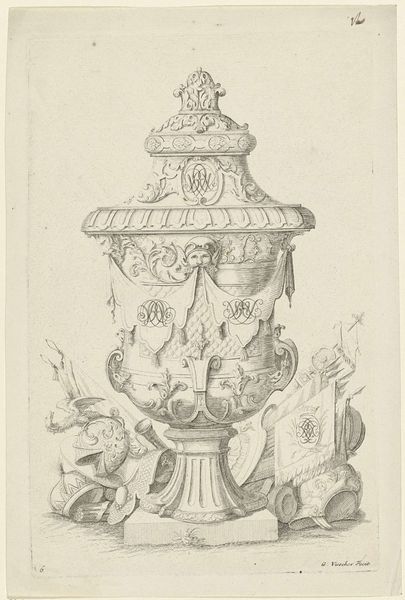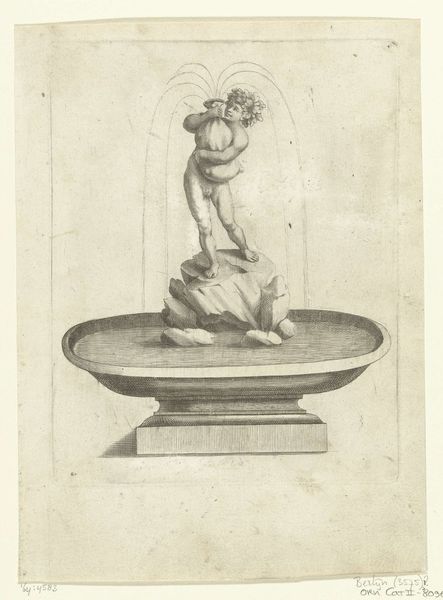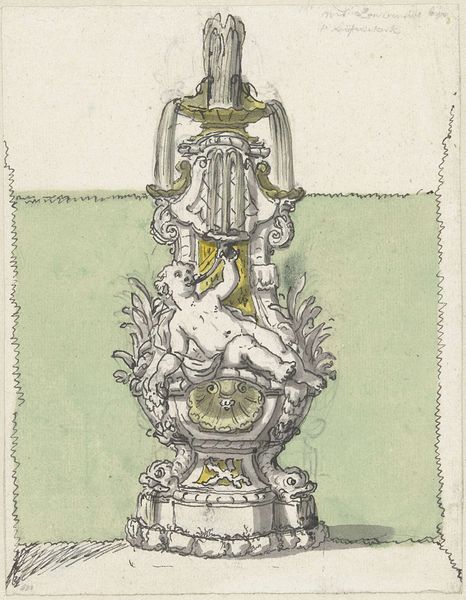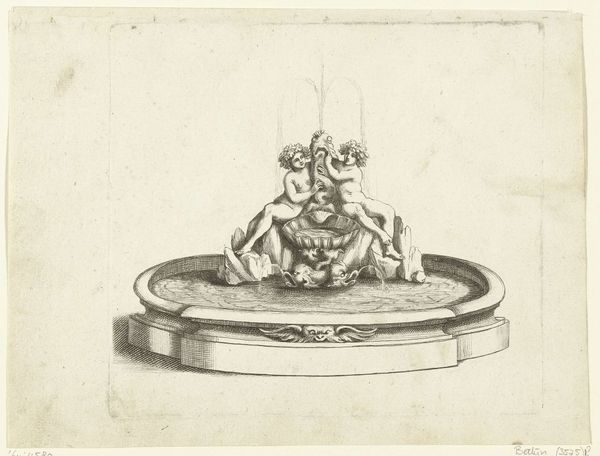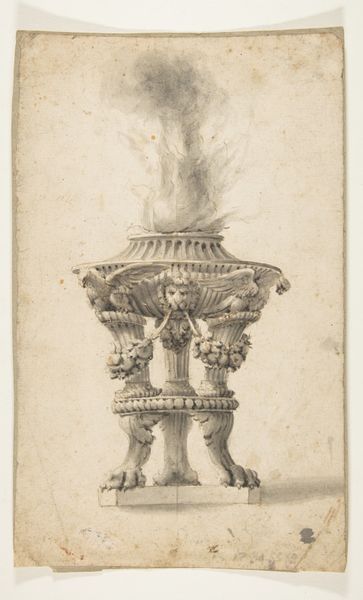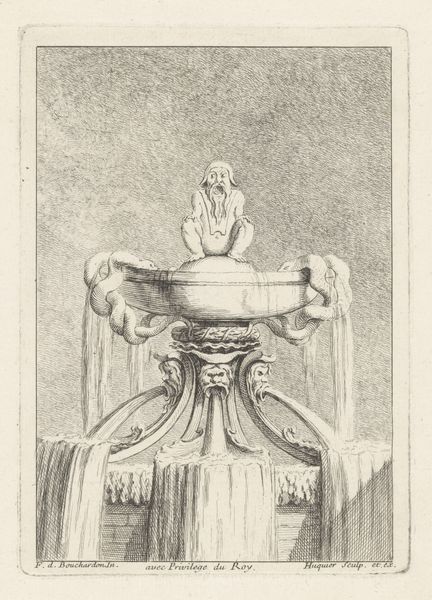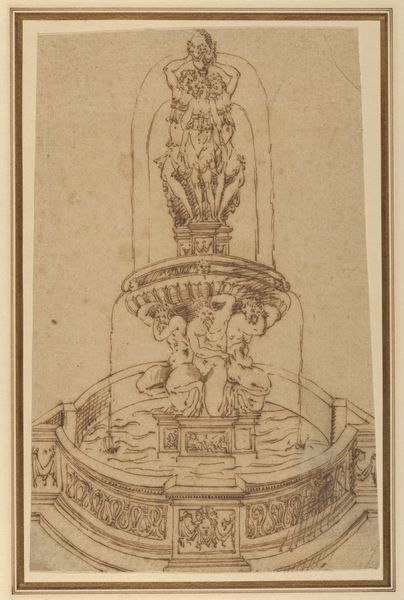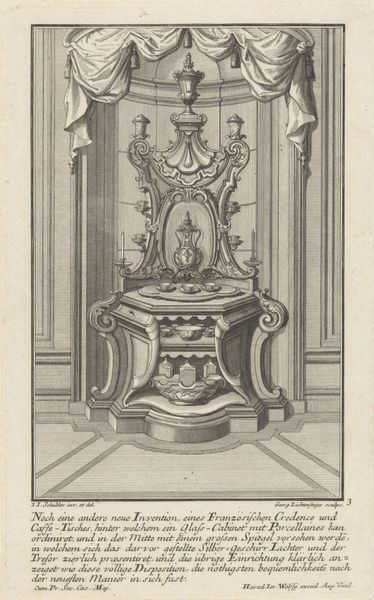
print, metal, engraving
#
baroque
# print
#
metal
#
pencil sketch
#
old engraving style
#
landscape
#
form
#
line
#
history-painting
#
engraving
Dimensions: height 196 mm, width 156 mm
Copyright: Rijks Museum: Open Domain
Curator: The cool precision of the lines lends a slightly dreamlike quality, doesn't it? Editor: It does. This is an engraving, rendered in metal, of a fountain. The piece is called "Fontein met waterbassin ondersteund door drie zeemonsters"—"Fountain with water basin supported by three sea monsters"—and it’s attributed to an anonymous artist, dating roughly from 1680 to 1707. Curator: The baroque love of the extravagant is clear. Those twisting sea monsters are wonderfully absurd, juxtaposed with those pudgy cherubs at the top! Look at how delicately the water spray is depicted. It really makes me appreciate the engraver’s mastery. Editor: Yes, it is formally compelling. Consider the visual hierarchy. The engraver guides the eye upward—sea monsters to basin, basin to cherubs, cherubs to that elaborate central spout. Curator: I’m thinking about where this design might have originated. Was this a commission for a real fountain? And what sort of workshop or collective of artisans would have been involved in bringing something like this into being? Was the engraver the original designer? Editor: That level of craftsmanship demanded considerable skill. We are seeing a mastery of form and composition. Also, it exemplifies a tension of line and depth. What appears almost photographic in accuracy then dissolves when our focus loosens, highlighting line work that defies pure representationalism. Curator: What you're saying speaks to me in that engravings like this were essential for disseminating designs widely before photography. Each print was a node in a network of information and aspiration. Editor: Certainly. Each impression circulated an aesthetic, reinforced class structures and hierarchies through luxury objects that weren’t broadly available to the masses. Curator: Seeing this work gives me much to consider about artistic distribution, labor practices, and class division back in the 17th century. Editor: And from a formal perspective, the engraving provides an interesting play of scale and perspective.
Comments
No comments
Be the first to comment and join the conversation on the ultimate creative platform.


